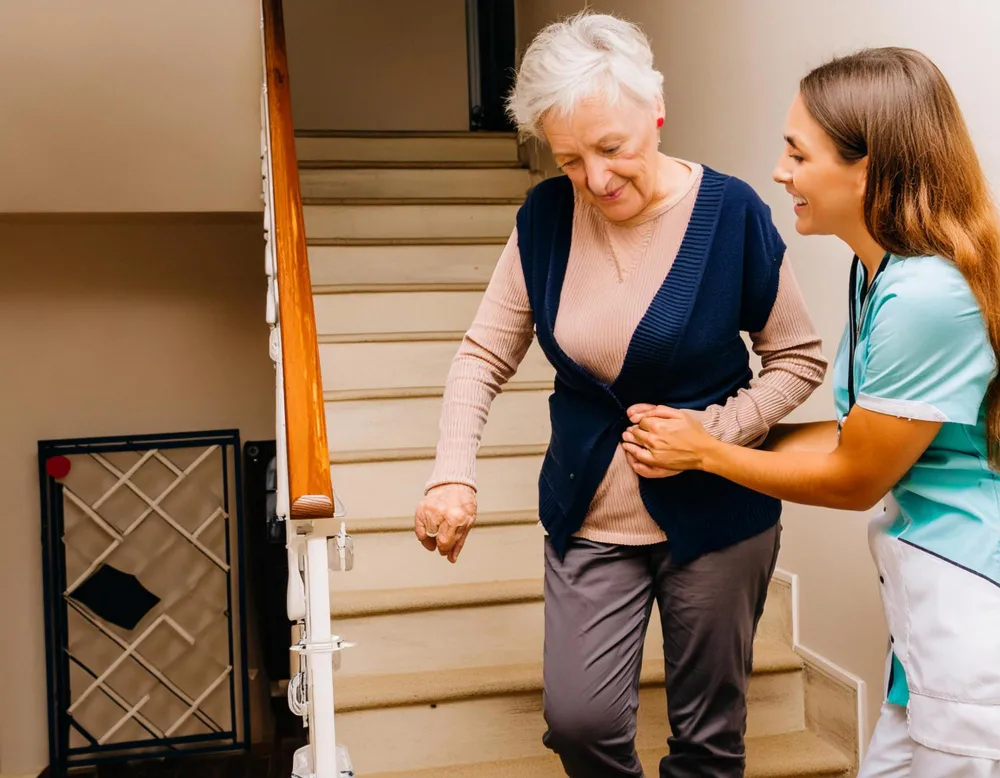
Choosing a time when your elderly family members like your parents or grandparents need a transition from independent to assisted living is not an easy task. It is not only an emotional but also a practical decision.
You may notice some changes in them with increasing age, like missing their medicines, rising healthcare issues, and feeling lonely. These signs make you think that your older family member really needs assisted living.
In this blog, we will discuss the signs that your parents or other elderly family members need assisted living and explain how to make this transition easy for them. Let’s dive in!
What Is the Difference Between Independent and Assisted Living?
Independent living means your elderly family members live in a community that offers all-day tasks, but the residents live in separate apartments. They offer meals on time, social activities, and all other daily chores. However, this living style offers a complete independent living with support when needed.
In assisted living, seniors receive more care that is available 24/7. They receive meals, medicines, healthcare, social activities, and helpful living. Some assisted living facilities also provide special care, like memory care for Alzheimer’s patients and mental health care.
Skilled care is an elevated level compared to what was previously explained. In this living, medical staff, such as skilled nurses, are hired to care for elderly people who need more specialized healthcare services.

Signs It May Be Time to Move to Assisted Living
It is crucial to make a timely decision when your senior family members need to move from independent to assisted living. Here are some common signs that will help you decide on this transition and help them without becoming dependent.
1. Difficulty with Daily Living Tasks
If your loved one struggles with basic tasks like preparing meals, bathing, or managing medications, it could signal that they need more consistent support. Assisted living offers structured help that maintains their dignity and improves day-to-day ease.
2. Increased Fall Risk or Accidents
Falls are the leading cause of injury among older adults. According to the CDC, nearly 36 million falls are reported each year among seniors.
If you have noticed bruises, unsteadiness, or multiple accidents, it is time for your senior family member to move into an assisted living facility. This way, they get a safer environment equipped with grab bars, non-slip flooring, and 24/7 emergency assistance.
3. Worsening Health Conditions
Chronic illnesses such as diabetes, Parkinson’s, or Alzheimer’s can make independent living difficult. As these conditions progress, timely care becomes vital. Assisted living ensures proper monitoring, medication management, and support tailored to their evolving needs.
4. Noticeable Social Withdrawal
Isolation is another critical sign. If your loved one is no longer participating in hobbies, avoiding outings, or feeling lonely, they might benefit from the community life in assisted living.
Social activities, shared meals, and scheduled events that your family members experience at such facilities reduce their loneliness and boost emotional well-being.
5. Growing Caregiver Responsibilities
Are you or another family member increasingly stepping in to help with everyday needs? Caregiver fatigue is real.
If you are missing work, losing sleep, or feeling overwhelmed, it may be time to consider a care team that can provide professional, reliable support every day.
6. Decline in Hygiene or Home Upkeep
Unkempt appearances, spoiled food in the fridge, or a cluttered living space can all indicate that your loved one is struggling.
Assisted living ensures that your loved one’s living space stays clean and that they receive help with grooming and household tasks.
7. Recent Health Scares or Hospital Visits
Has your loved one been hospitalized recently? A major fall or health event is often a turning point.
Repeated emergencies suggest they need a more secure environment with immediate access to care.
Can You Come and Leave in Assisted Living?

Families commonly ask, “Can you come and go in assisted living?”
You can leave assisted living but with thoughtful precautions to ensure well-being. Residents in assisted living enjoy personal freedom. They can attend family events, visit local attractions and even travel if their health allows.
However, communities have protocols to ensure safety. Residents may need to sign out and inform staff of their whereabouts. This balance allows independence while providing peace of mind.
How to Make the Transition Between Assisted and Independent Living Easy
The change from independent to assisted living does not have to be stressful. Here are some steps that can help make the move easier:
- Start the Conversation Early: Talk about care needs before there is a crisis. Bring up the topic gently and in a way that respects your loved one’s opinion.
- Tour Communities Together: Let your loved one explore different options. Visit, ask questions, and attend a meal or activity to see what daily life is like.
- Add Personal Touches: Decorate the new space with familiar items like family photos, favorite books, or a cozy blanket. These small things can help it feel like home.
- Stay Connected: Keep visiting and calling. Encourage your loved one to join in activities and meet new people. Your support makes a big difference during the adjustment.
What Makes St. Francis Villa Assisted Living Community a Trusted Choice
If you are looking for a place that feels more like a home, you must visit St. Francis Villa Assisted Living. With 22 years of experience, we are trusted by hundreds of families. We provide a warm and supportive environment for your senior family members and help them make their lives comfortable and peaceful.
One of the most valued features is our continuum of care. Residents can transition from independent living to assisted services without ever leaving their community. This means no disruption in friendships, routines, or surroundings.
We offer:
- Licensed caregivers available 24/7
- Personalized care plans that evolve with each resident’s health needs
- On-site amenities such as restaurant-style dining, housekeeping, transportation, and engaging wellness programs
- Support for families, including open communication and emotional guidance throughout the transition
We promise to care for your family as we do our own. Families trust us because we combine compassion with professionalism and make sure every resident feels safe, valued, and connected.
Final Words
Making a decision to transition from independent living to assisted living is difficult but necessary.
Some signs, like missing meals, essential medication, healthcare problems, falls, and feeling alone, indicate that it is the right time to join an assisted living facility.
In assisted living, you or your loved ones can leave the place for some family gatherings, parties, and travel with some precautionary measures.
In addition, visiting them regularly, placing family photos nearby, and talking about the assisted living experience before making the move can help your loved one adjust to the change more easily.


